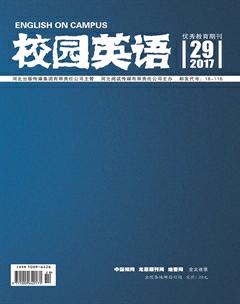Unity of Language, Culture and Communication
【Abstract】Language and culture cannot be separated in learning foreign languages. As we communicate with native speakers, the influencing factors are not only the language itself, but also the culture. This paper tries to present the close unity of language, culture and communication. This point has implications for foreign language learning.
【Key words】language; culture; communication
Introduction
Language, culture and communication form a triangle of relation. There are two directions between any two of them. This study will not only pay attention to the relations among them, but also to the relative studies about their practical uses.
The processes among language, culture and communication are dynamic. Each of them has effects on the other two aspects. Language transmits culture and promotes communication;culture shapes language and is the content of communication;communication is the way of expressing culture and language transmitting. Behaving and communicating differently across contexts are culturally rooted styles of being responsive to situation demands and constraints, not necessarily meaning that they are deceptive in nature or misleading on purpose.
Language as culture, culture as language
Language reflects culture;culture shapes language. “Culture, then, consists of standards for deciding what is, standards for deciding what can be, standards for deciding how one feels about it and standards for deciding how to go about doing it.”(Goodenough, 1981) Language is cognitively associated with cultural scripts, norms, and practices (Chen & Bond, 2010).
Language effects are related to cultural characteristics and orientations. Embedded in cultural systems, language use carries shared knowledge and meanings as well as norms within the community. Past studies designs often rely on between-culture comparisons of monolinguals, but the learning and use of additional languages offer another perspective to linguistic relativity (Pavlenko, 2011). Culture can be a key to understanding the relations between language and cognition.
Language as communication, communication as language
The investigation of language and its communication functions is treated as a concern shared in common by those working in applied linguistics, child development, cultural studies, language evolution, linguistic anthropology, linguistics, philosophy, sociolinguistics and so on.(Talbot Taylor, John E Joseph)Language is a communication tool for transmitting ideas, thoughts, and opinions.endprint
Language not only contains a constellation of linguistic categories, grammatical structures, and abstract rules, but is also used as a tool to communicate thoughts and ideas along with goals, motives, and intentions (Semin, 2001). Language uses guides peoples perceptual focus and influences the way they see, think, and act. Written language has often been employed as a prime in social cognition research (Oyserman, 2011).
Communication as culture, culture as communication
The issue of communication becomes a problem of effective communication and mutual understanding between cultures. The searches towards overcoming barriers in intercultural communication focus not only on institutional communication, but also on well-defined communication between cultural communities with a well-defined identity.(Viorel Miulescu, 2014)
By the communication side, the culture is a social phenomenon, most of the recorded human culture, which is, in fact, the interpretation and conferral of meanings. The communication is not external of the culture;it belongs to its meaning and essence.
The processes among language, culture and communication are dynamic. Each of them has effects on the other two aspects. Language transmits culture and promotes communication;culture shapes language and is the content of communication;communication is the way of expressing culture and language transmitting.
References:
[1]García,Ofelia,and Li Wei.Translanguaging:Language,Bilingualism,and Education.Basingstoke:Palgrave Pilot,2014.Print.
[2]Gentil,Guillaume.“A Biliteracy Agenda for Genre Research.” Journal of Second Language Writing 20(2011):6-23.Print.
[3]He,Y.(2013).Developing teachers cultural competence: application of appreciative inquiry in ESL teacher education.Teacher Development,17(1),55-71.
[4]Hornberger,Nancy,and Holly Link.“Translanguaging in Todays Classrooms:A Biliteracy Lens.” Theory into Practice 51.4(2012):239-47.Print.
[5]Lado,R 1989,‘Linguistics across borders cultures,New in foreign linguistics,vol.25,Moscow,pp.32-63.
[6]Mokhtari,Kouider,and Carla Reichard.“Investigating the Strategic Reading Processes of First and Second Language Readers in Two Different Cultural Contexts.” System 32(2004): 379-94.Print.
作者簡介:李佳婧(1993.6-),女,漢族,山東青島人,碩士研究生在讀,現就讀于首都師范大學外國語學院,英語專業。endprint

